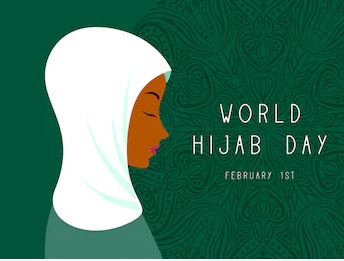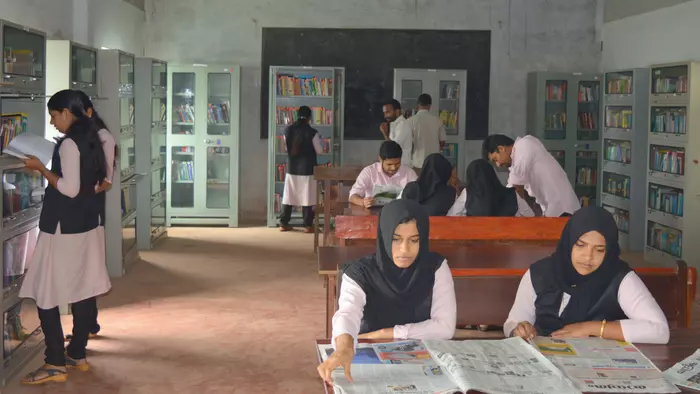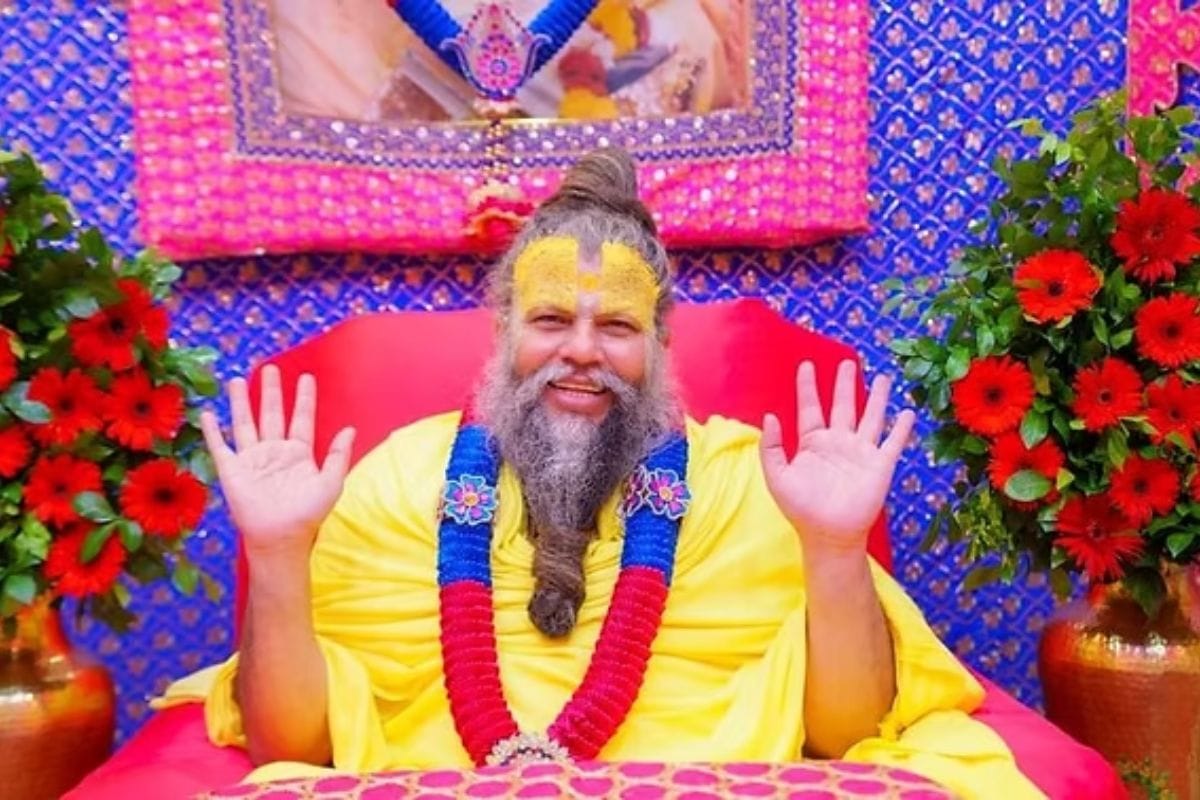On February 1, every year, since 2013, World Hijab Day is celebrated across the globe to dismantle the prejudices that come with hijab. An open invitation is sent to women of all faiths to wear headscarves for one day in solidarity with Muslim women worldwide. “By walking in my shoes for one day on February 1, women would see that I am no different from them,” the president and founder of the World Hijab Day Organisation, Nazma Khan, explained.
What WHD means to a Muslim woman
World Hijab Day, for a Muslim woman who chooses to wear hijab, stands as a day when her choice is celebrated – when women from all over the world come together in solidarity, forming a sisterhood, telling Muslim women that they are not alone. The idea behind World Hijab Day is to build bridges of understanding, awareness, and education about the hijab.
Why do we need WHD?
“It’s really a wonder that I haven’t dropped all my ideals, because they seem so absurd and impossible to carry out. Yet I keep them, because in spite of everything, I still believe that people are really good at heart.” -Anne Frank
The primary reason of the growing hatred is apparently misinformation. People carry prejudices that can be eradicated by a simple conversation. In an immensely diverse country like ours where we grew up with a lot of stereotypes – thanks to media and mainstream cinema, especially in the current political atmosphere. It is an urgent need for us to understand other cultures and religion, and to respect them.
The Telegraph reported educator Deepak Ramola who ran #UnderTheHijab project that showcased paintings of faceless hijabis to dispel the stereotypes, saying, “I discovered that many people who suffer from Islamophobia had never really interacted with a Muslim. Another important learning was that art can help break stereotypes, create awareness, build bridges. Most importantly, the whole campaign re-enforced the life-lesson of young Sarah: ‘Don’t hate what’s strange’.”
Also read: The Myth Of Muslim Women’s Empowerment In India
For the same project, Advithi Emmi’s creation has the following words scribed beside it — “I was that person who had some kind of a preconceived notion, but when I got a chance to live with them I felt very normal. They are just like any of us… (sic).”
If you can not accept hijab as a choice even after millions of women saying so – it is due to your bigotry
WHD gives a chance to people to communicate, learn and understand about the hijab – which is one of the many controversial topics associated with Islam. In these politically turbulent times where Islamophobia is rampant like never before, World Hijab Day becomes more important. Campaigns like these for other communities, especially those who are marginalised and stereotyped, should be encouraged in order to cultivate inclusivity.
Why Hijab?
It has often been alleged that not all choices are feminist choices – but is it restricted to only hijab? Women have been questioned for doing makeup, not being ‘feminine’ enough or being overtly feminine. Attiya Latif states, “Western feminists tell Muslim women that they can’t conceptualise their own feminism, and instead adhere to theirs. When in reality, feminism is a diverse movement where women of various cultures and religions can determine equality for themselves.”
People have called me ‘hijabi apologist’ for explaining my choice. Today, I am not going to explain my choice to you. Nor do I need to. If you can not accept hijab as a choice even after millions of women saying so – it is due to your bigotry. By supporting those who chose to wear hijab, the fact that many women are forced to wear hijab just like many women who are forced to remove hijab, can not be denied. Or that hijab is often misused by patriarchal power structure. Inclusiveness is the soul of intersectional feminism. As in the words of none other than Audre Lorde, “I am not free while any woman is unfree, even when her shackles are very different from my own.” My shackles are not what you perceive my shackles are, my shackles is the very narrative that defines ‘my shackles’.
The reasons for wearing hijab by Muslim women can differ widely. For some, it’s a religious obligation, a representation of the pride in one’s religious or cultural identity, or just something without which they feel incomplete. For others, it has become a symbol of power, self-control, resistance by being a visibly Muslim women and agency. The reasons for wearing hijab can differ from having no reason at all to having all the reasons in the world.
For others, it has become a symbol of power, self-control, resistance by being a visibly Muslim women and agency.
I grew up in a place where hijab was more of a cultural thing then religious. There are woman who do not feel associated with it and then there are women who feel strongly towards their hijab and see it as an intimate thing – a thing that is not only a piece of cloth for them but a part of their identity, something that they stand for.
In times, where hijab is being banned in examinations, Muslims are being lynched and are being subjected to hate crimes – hijab is no more just a religious or spiritual thing but has emerged as a symbol of protest, resistance and agency for Muslim women.
When we talk about Muslim women, it is important that we acknowledge the heterogeneity among Muslim women and how there is no singular identity and how hijab is not the sole identity of a Muslim woman. It enrages me when the identity of a woman is confined to her clothing – be it hijab. Campaigns like WHD acknowledges this heterogeneity. It acknowledges that a woman, here Muslim, is more than what she wears. She is more than her hijab. Let’s be clear – it is a part of her identity, not who she is.
There are many role-models for hijabi women worldwide from Doaa Elgobashy, Ibtihaj Muhammad, Ilhan Omar, Linda Sarsour to Halima Aden-they are politicians, activists, athletes to models. It is time we create such spaces in India too where we can find women of different faiths, looks, colours, shapes in the mainstream. It all starts with a conversation. From understanding the perspective of the people who are different from us. From the warmth that we can show to the marginalised and misrepresented communities.
Also read: Why I Choose To Wear Hijab: An Open Letter From A Tired Muslim Feminist
References
1. Aljazeera
2. Huffpost
3. The Telegraph
Featured Image Source: Shutterstock





Millions of women think , women should not enter sabrimala temple…. What’s ur thoughts on that ???
https://www.quora.com/share/Is-India-a-secular-country-How-will-we-dicuss-pseudo-secularism-in-India-10?ch=10&share=1219ca0b
Please give it a read.
Hijab is a symbol of Islamic patriarchy, and this so called feminism site is supporting it. Oh the irony.
It’s a shame that a website which claims to be a feminist voice, publishes articles like this to justify 7th century regressive crap which is used to subjugate Muslim women. Perhaps he author isn’t aware of the millions of Mulsim women for whom restrictive clothing isn’t a fashion choice. The fact that the author admires people like two-faced Linda Sarsour who viciously attacked Ayaan Hirshi Ali – a childhood victim of Female Genital Mutilation who escaped the clutches of Islam – for exposing its inherent evilness toward women, goes to show what skewed understanding the author has about feminism. The claptrap in the article won’t change the fact that the restrictive clothing for Muslim women has all to do with modesty and to claim that it has anything to do with liberty is plainly delusional.
What I don’t get about WHD is why MEN are not asked to wear hijab to show solidarity with the women who “choose” to wear it.
I am following you from almost 3 years. Can you please tell us , why you have to defend such a patriarchal practice?